智能化自寻迹程控车模外形及其控制系统设计
58页 19000字数+说明书+任务书+开题报告+外文翻译+4张CAD图纸【详情如下】
任务书.doc
发射电路.dwg
外文翻译--柔性制造系统.doc
成品三视图.dwg
接收电路.dwg
摘要.doc
智能化自寻迹程控车模外形及其控制系统设计开题报告.doc
智能化自寻迹程控车模外形及其控制系统设计论文.doc
目录.doc
程序流程图.dwg
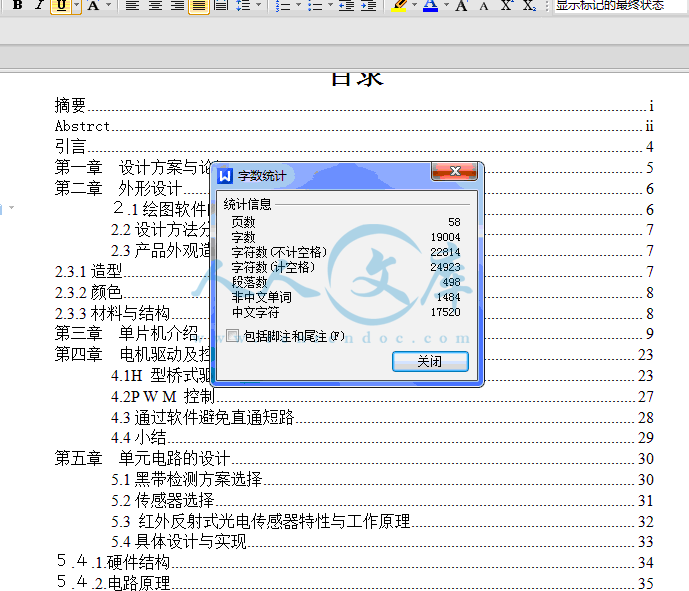
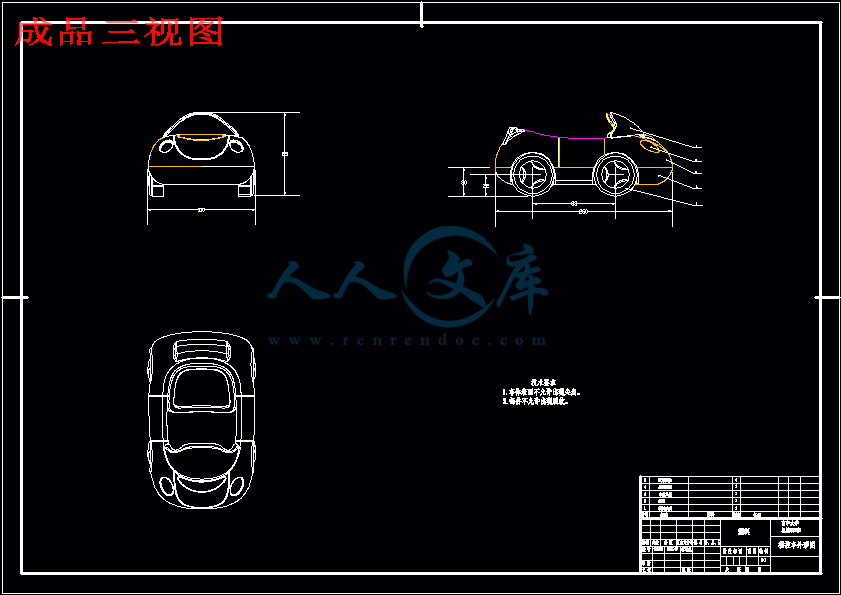

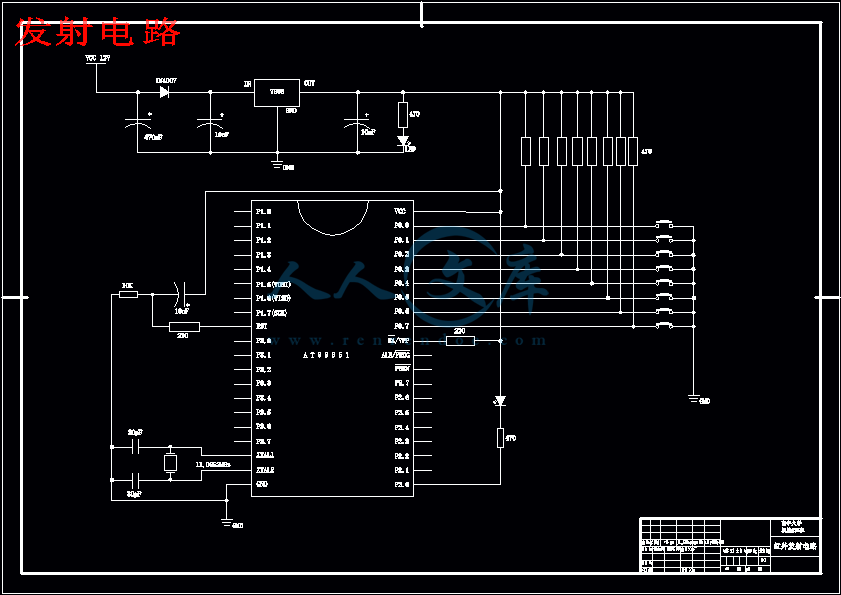
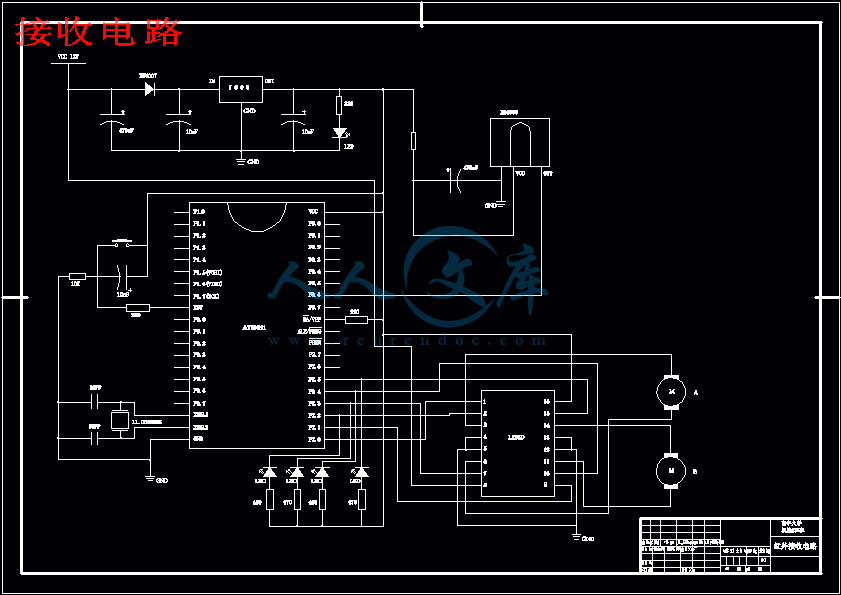
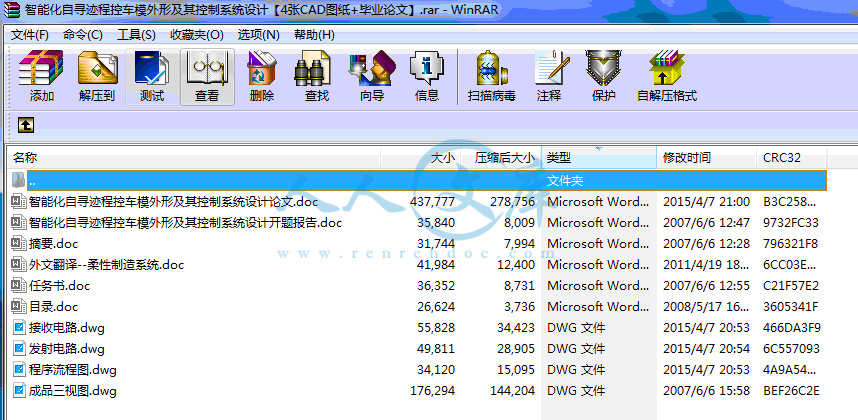

目录
摘要i
Abstrctii
引言4
第一章 设计方案与论证5
第二章 外形设计6
2.1绘图软件的选择6
2.2设计方法分析7
2.3产品外观造型的三大美学因素7
2.3.1造型7
2.3.2颜色8
2.3.3材料与结构8
第三章 单片机介绍9
第四章 电机驱动及控制23
4.1H 型桥式驱动电路23
4.2P W M 控制27
4.3通过软件避免直通短路28
4.4小结29
第五章 单元电路的设计30
5.1黑带检测方案选择30
5.2传感器选择31
5.3 红外反射式光电传感器特性与工作原理32
5.4具体设计与实现33
5.4.1.硬件结构34
5.4.2.电路原理35
5.4.3程序及流程图38
6.1总结43
参考文献46
致谢47
摘要
本文介绍了利用红外反射式传感器实现小车自动寻迹导航的设计与实现。自动寻迹是基于自动导引小车(AGV—auto-guided vehicle)机器人系统,用以实现小车自动识别路线,判断并自动规避障碍,以及选择正确的路线。实验中采用与地面颜色有较大差别的线条作引导,使用反射式红外传感器感知导引线和判断障碍物。系统控制核心采用AT89S51单片机,系统驱动采用控制方式为单向PWM的直流电机。该技术可以应用于无人驾驶机动车,无人工厂、仓库、服务机器人等领域
关键词:自动寻迹;红外传感器 ;单片机
Abstrct
This article introduces the design and execution of auto-searching for track by usage of the reflected infrared sensor on the auto-guided car. The auto-searching for track is on the base of the AGV-auto-guided vehicle system. It makes the car discern the routs, judge and evade the obstacles automatically. So the car can choose the right routes. In the experiment we take use of the guiding wire whose color distinguishes from the background to guide the car and the inflected infrared sensor to discern the guiding wire and obstacles. The AT89S51 Single Chip Microcomputer is used for the control core in this system, and the one-way PWM direct current electromotor for the motive force or power system. This technology could serve to driverless mobile, robot factory, warehouse, service robot and etc.
Key Word:Auto-searching for track; infrared sensor; Single Chip Microcomputer
引言
自第一台工业机器人诞生以来,机器人的发展已经遍及机械、电子、冶金、交通、宇航、国防等领域。近年来机器人的智能水平不断提高,并且迅速地改变着人们的生活方式。人们在不断探讨、改造、认识自然的过程中,制造能替代人劳动的机器一直是人类的梦想。
随着科学技术的发展,机器人的感觉传感器种类越来越多,其中视觉传感器成为自动行走和驾驶的重要部件。视觉的典型应用领域为自主式智能导航系统,对于视觉的各种技术而言图像处理技术已相当发达,而基于图像的理解技术还很落后,机器视觉需要通过大量的运算也只能识别一些结构化环境简单的目标。视觉传感器的核心器件是摄像管或CCD,目前的CCD已能做到自动聚焦。但CCD传感器的价格、体积和使用方式上并不占优势,因此在不要求清晰图像只需要粗略感觉的系统中考虑使用接近觉传感器是一种实用有效的方法。
机器人要实现自动导引功能和避障功能就必须要感知导引线和障碍物,感知导引线相当给机器人一个视觉功能。自动寻迹是基于自动导引小车(AGV—auto-guided vehicle)系统,实现小车自动识别路线,判断并自动规避障碍,选择正确的行进路线。采用与地面颜色有较大差别的线条作引导,使用传感器感知导引线和障碍判断
第六章 操作说明
整个制作过程全部手工焊接而成,车身长约20cm,宽约15cm,高约10cm。由于设置为纠偏检测,因此具有闭环系统特征,从制作效果上看,能够较好地反映闭环控制原理。
操作时,先做好轨迹(可用白纸在黑胶皮上制作),然后将车模放于其附近。打开电源时,电路开始检测p3口状态,当确认为低电平(即已按下SB2)时,车模演奏一曲欢乐颂,然后返回初始状态。反之,则发出“嘀嘀”声间歇前进,并在检测到轨迹后“跟踪”轨迹行走。当轨迹为直线时,车模恢复间歇运动状态,以控制自身速度,直到下一次偏差产生。
当计数器溢出时,检测停止,车模后退一段距离,准备进行新一轮循环,如此反复。
程序在运行时“死机”现象很少,该车设有复位键SB1,可将系统复位后重新运行。
当车模垂直检测到轨迹时,讯响器动作,表示产生错误。也可将此功能作为其他报警装置开发。
自寻迹程控车及其各部分结构见附图。
参考文献
[1] 王晓君 ,安国臣等.MCS-51及兼容单片机原理与选型.电子工业出版社
[2] 薛栋梁. MCS-51/151/251 单片机原理与应用(第二版). 中国水利水电出版社
[3] 孙育才,王荣兴,孙华芳. ATMEL新型AT89S52系列单片机及其应用 .清华大学出版社
[4] 林清安.Pro/ENGINEER Wildfire 零件设计-进阶篇(上)中国铁道出版社
[5] 王和明 . 刘嵘 . AT89系列单片机及其编程 电子技术96年09期
[6] 崔晓燕. AT89系列高性能单片机及其应用 微型机与应用96年03期
[7] 谈文心等. 模拟集成电路原理及应用. 西安交通大学出版社. 1995.
[8] 沙占友. 集成化智能传感器原理与应用. 北京:电子工业出版社.2004.
[9] 何立艮.单片机应用系统设计. 北京航空航天大学出版社. 1990.
[10] 付家才. 单片机控制工程实践技术. 化学工业出版社. 2004.
[11] 张毅刚. MCS251单片机应用设计. 哈尔滨工业大学出版社. 1997.
[12] 万富君,潘松峰.单片微机原理系统设计与应用.中国科学技术大学出版社
[13] 武庆生,仇梅.MCS 系列单片机及接口实用教程.电子科技大学出版社,1997.
[14] 王家桢, 王俊杰. 传感器与变送器. 清华大学出版社, 2001
[15] 涂时亮, 张友德, 陈张龙.单片机软件设计技术 科学技术文献出版社 1988.
 川公网安备: 51019002004831号
川公网安备: 51019002004831号